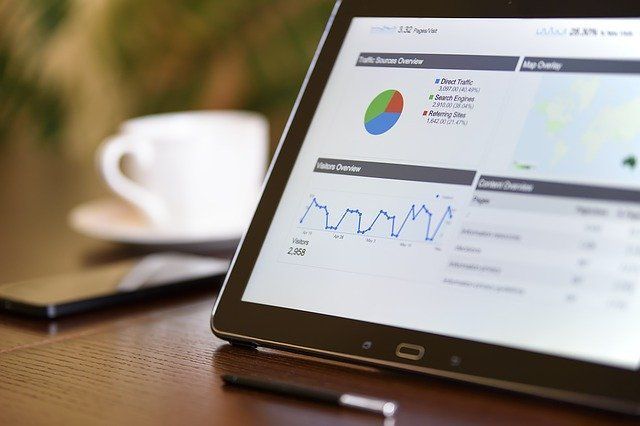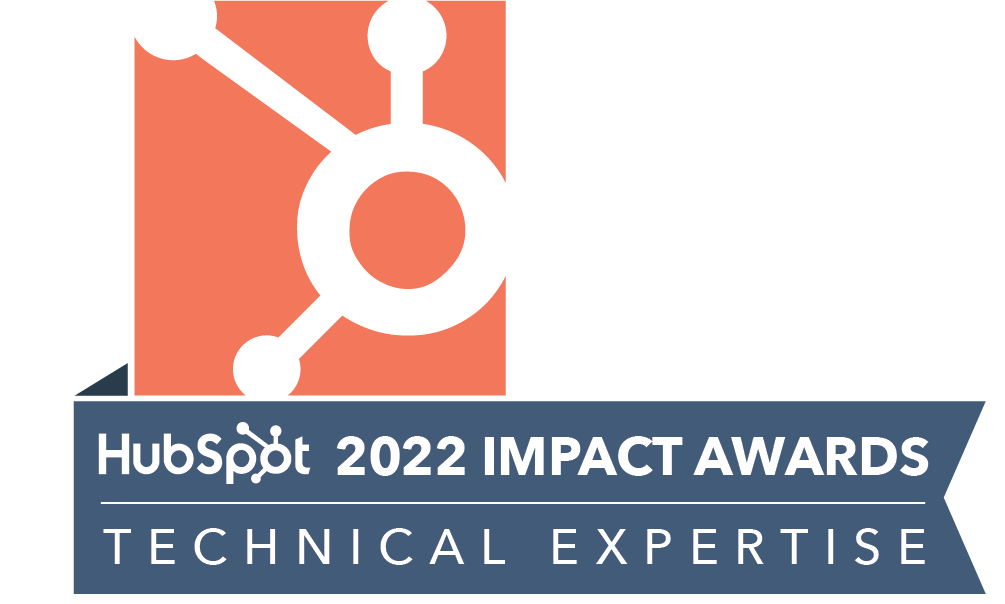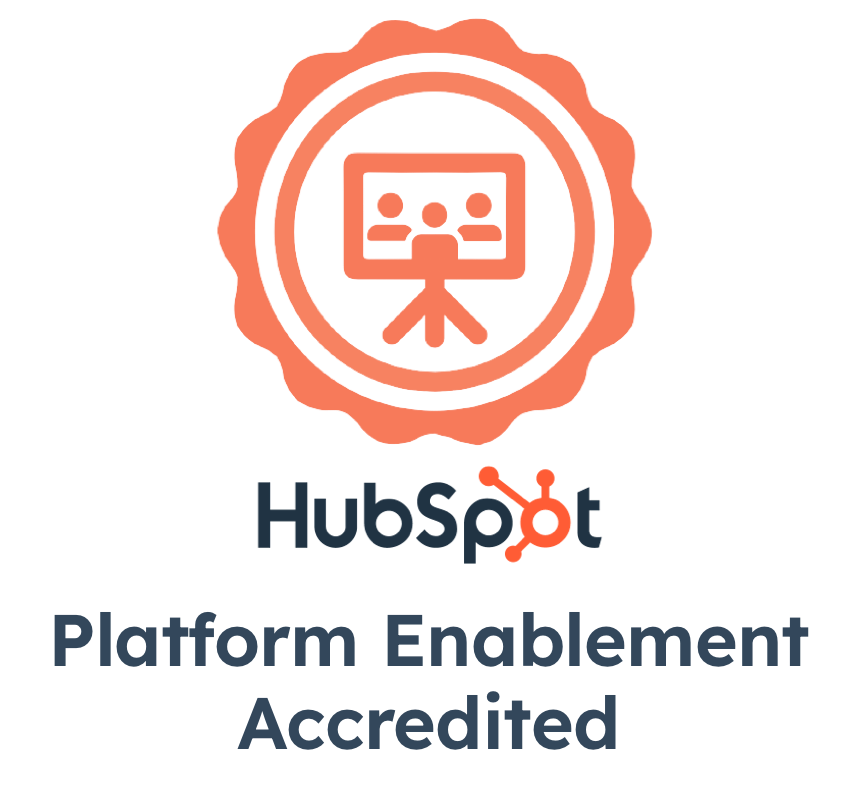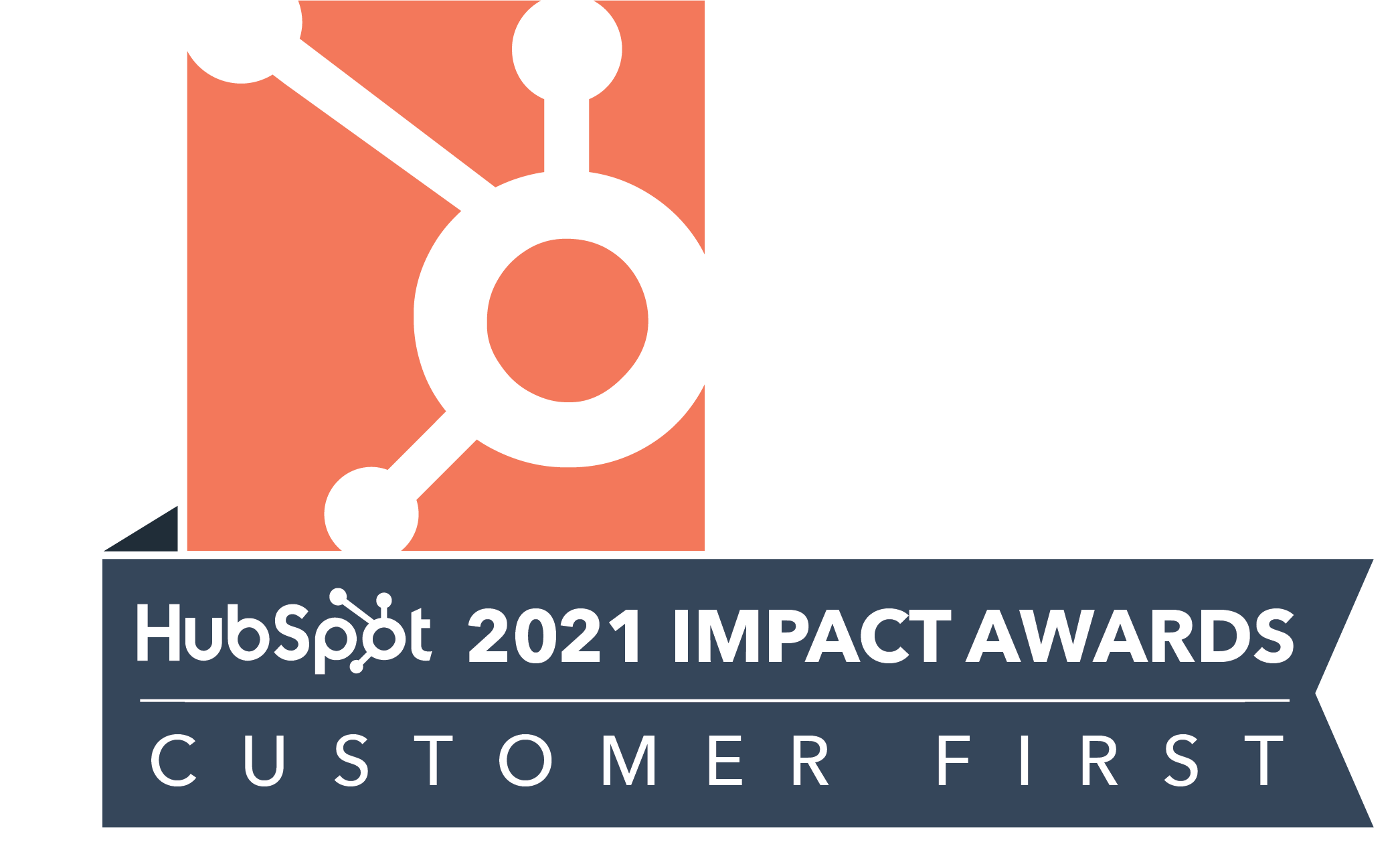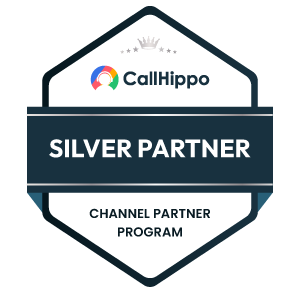By now you’ve already heard us talk and write about the 46:54 ratio. As a quick memory jog, as per Institute of Practitioners of Advertising, this ratio indicates the budget split you need between brand awareness and demand generation.
We speak to B2B prospects – CEOs and heads of marketing – nearly every week. We hear them touch upon building a brand, but the majority of the conversation and expectation is really about lead generation or demand generation. “What can you show in 3 months?” That’s the question we are often asked.
The focus on the short term is tremendously high, and it’s pretty obvious that their investment split will be closer to 20:80, at best, with only 20% of the spends focused on b2b brand awareness campaigns.
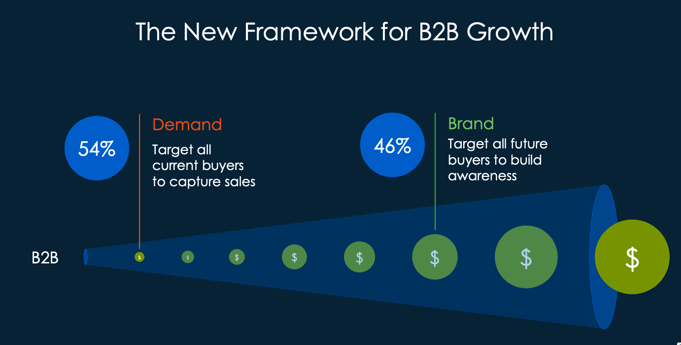
Putting this into the perspective, Heidi Andersen, VP- Global Online Sales, LinkedIn, says that your long term growth comes from what you do for brand awareness now, while your short-term growth comes from the demand generation activities. B2B Marketers need to take note of this if they want to solve their pipeline drying up challenge.
Andersen presented this as part of her talk on A New Framework For B2B Growth at GROW, Singapore 2019.
1. Brand Awareness vs Brand Perception
Let’s take a minute to clear this. Andersen puts this up very simply in this manner:
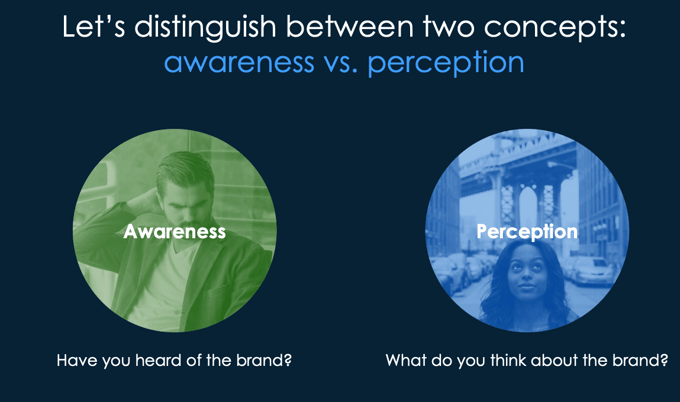
If people have heard of your brand, that’s brand awareness. What they think of your brand is the perception.
Marketers spend an awful amount of time ensuring that the brand is perceived correctly. Is the differentiation coming through in a campaign? What about trust?
As it turns out, B2B brand awareness campaign have a larger impact on the measures of effectiveness on business parameters like profit, sales, market share, and so on.
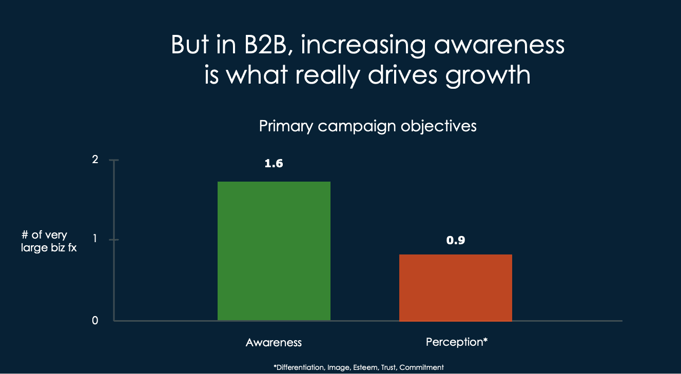
So quit worrying about perception, just increase brand awareness.
2. Reason vs Emotion
We see you’re bracing for the B2B2H talk, how B2B is really talking to people too, and not stone cold businesses. We are simply going to look at when you should use emotion in your campaigns and when should reason come in.
As Andersen said, “We often overestimate how rational B2B purchases are.”
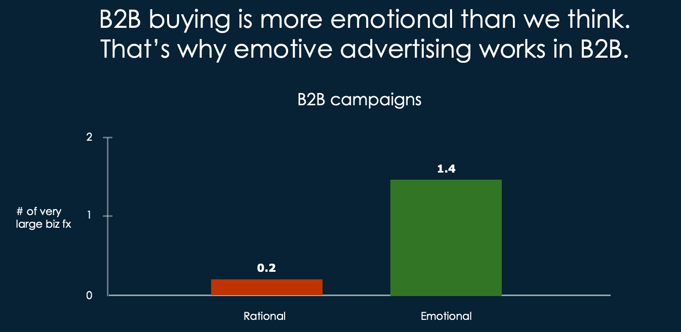
As per IPA Databank’s data analyzed by renowned researchers Les Binet and Peter Field, B2B campaigns with emotional messaging delivered more impact on the business than rational ones.
Andersen says, “For in-market prospects, be rational. For out-of-market prospects, be emotional.”
How’s that for a thumb rule?
3. Customer Acquisition vs Loyalty Strategies
You can grow the business by acquiring more customers, or by selling to existing customers. Is one of these a better proposition?
The data from IPA Databank analyzed by Binet and Field throws up a recommendation that can be confronting to many. Take a look:
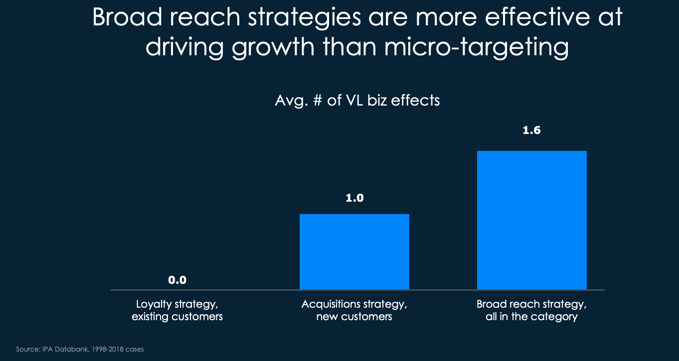
What shows the maximum impact on the business measures: loyalty, customer acquisition or broad reach strategy? Broad reach refers to talking to customers and non-customers together, has the most impact. This can come as a shock to us who talk about expanding an account, and personalization. The way to look at this piece of information is not think that one has to target one’s dad and grandmom in the next campaign, but be cognizant of the fact that there are people out there who will be in the buying committees as they progress in their careers. So they need to be targeted as well, as a long-term strategy.
Should you take the focus off your existing customers? Field, at a conference in the UK said that marketers need to keep talking to them and keep their campaigns on. Just don’t put all the money on existing accounts alone, because that is not a long-term strategy, he said.
Lots of food for thought. Go ahead and review your b2b brand awareness campaign keeping these points of view in mind and figure out what you can do to enable long-term growth for the business.
If you want to know about this data or research here are some links to follow:





